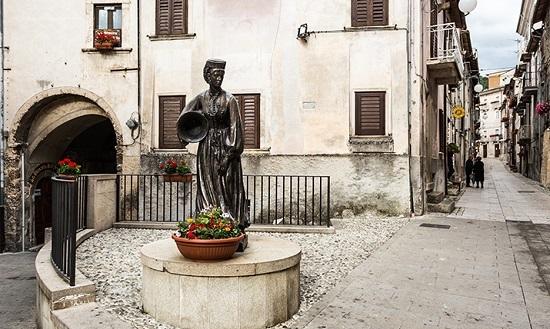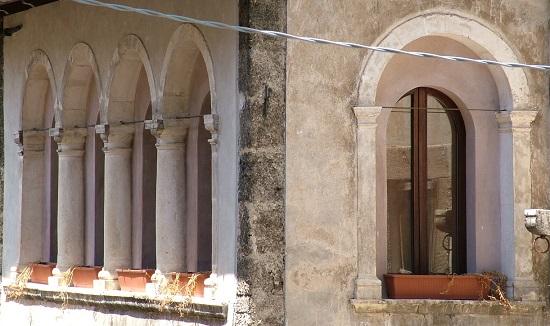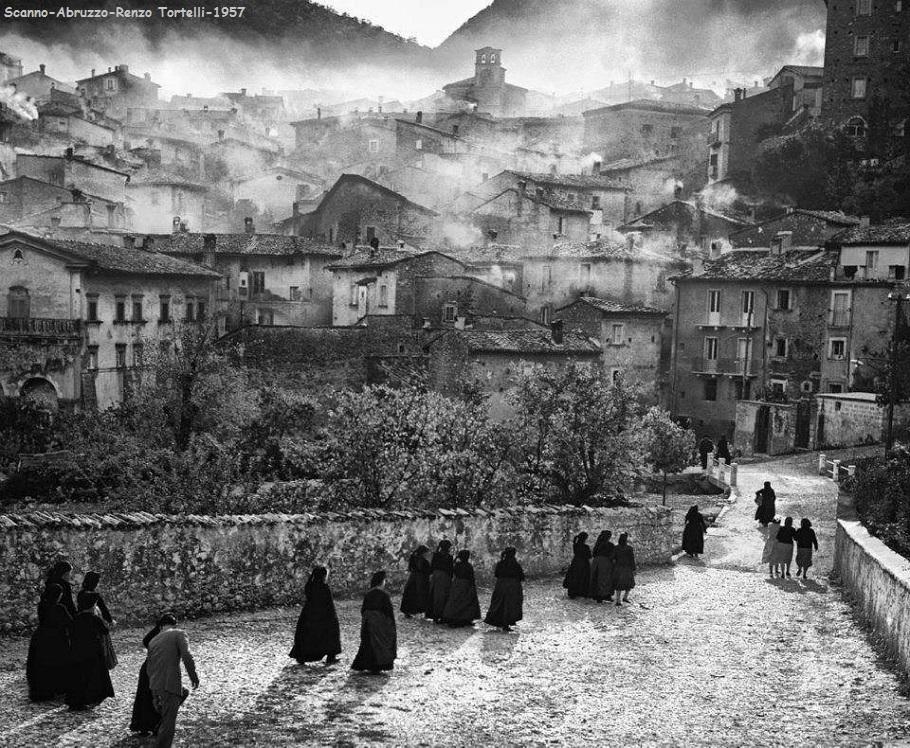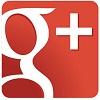|

The name Scanno is derived from the Latin 'Scamnun' a term the Romans used to indicate the borders of a conquered territory which had been divided and given to new owners.
Mentioned for the first time in 1067 in a donation act of the Monastery di S.Pietro in Lago in Montecassino, Scanno demonstrates a more ancient origins through the finding in the territory of Roman rests and others dating back to the bronze age.


The lake : Local legend has it that Scanno’s enchanting lake was created by a feud between a white witch and a sorcerer; the lake being the spot where the witch finally fell.

It is now a resort frequented by many tourists and from the shore of its lake, the calm waters reflect the suggestive chapel of the Madonna del Lago.

Faced by the town of Villalago, both villages are known to be Abruzzo's most beautiful hamlets.

Below is a close up view of the lake of St. Domenico, in the Villalago's territory with its hermit church.

Main sights: Scanno offers a unique and characteristic atmosphere with its secular architecture immortalized by distinguished photographers such as Cartier-Bresson, Giacomelli, and Scianna.

Above one of the many small town squares with a monument dedicate to the town's women.

Places to visit include the splendid churches of the Matrice di Santa Maria della Valle, the church of Santa Maria di Loreto and that of S. Antonio di Padova.

The church of S.Maria di Costantinopoli with a beautiful fresco representing Madonna in throne, other city famous sacred buildings are S. Eustachio (with Baroque interior), S. Maria delle Grazie (with the harmonious eighteenth-century stucco decoration ) and S. Anthony of Padua (with a portal from the late sixteenth century and Baroque interior, painted in the early decades of the eighteenth century by Giambattista Gamba.

Nearby you to see the impressive church of Our Lady of the Lake (The Nunciata), on the shores of the lake, the Palazzo Mosca and Palazzo Di Rienzo adorned with loggias and mullioned windows.

Traditions & folklore - In First 2 weeks of January
Festival of St Antonio : It opens with the offering of fire wood carried by a procession of mules, as a gift to the saint .
The fire wood is usually sold to provide for the maintenance of the church and the support of the monk who guards it.

 The next day, before the procession, between the bell's ring and the marching band, in a riot of flowers and colors, all the children dressed up, participate in the procession of the loaves to symbolize the 'offering of bread' with dozens of girls and women carrying on the their head wicker baskets filled with loaves of bread to give to the poor and to eat, after the blessing. The next day, before the procession, between the bell's ring and the marching band, in a riot of flowers and colors, all the children dressed up, participate in the procession of the loaves to symbolize the 'offering of bread' with dozens of girls and women carrying on the their head wicker baskets filled with loaves of bread to give to the poor and to eat, after the blessing.
La serenata della Chezetta
( the socks serenade - the "begging" festival) .
 Singing the so called "questua" song. Singing the so called "questua" song.
"Questua" in dialect is the act of begging for donations, especially food. A serenade to be sung on the evening of January 5th, one of the few songs that survived over time that seems to have originated from the Celtics Lombard.
On this night, as tradition goes, singers hang a socks under the window of local girls and start singing until the girl opens the window and promises to fill the socks with food.
Scanno is also famous for the fine and complex laces, crafted on pillows and...

... its traditional costumes that some of the older ladies still wear today...

The question of the origin of the population of Scanno (Scannesi), has been debated by many eminent scholars, as the characteristics of the dialect, traditions and women's costume led to the finding that some people in the ethnic group was of oriental origins.
|

Scanno in located in the province of Aquila, about 150 Km from Roma and 180 km from Naples.

Resting on a ridge in one of L'Aquila's most beautiful valleys, Scanno is today a well known summer and winter tourist destination offering recreational, natural, artistic beauty, folklore and crafts.


Another element that bewitches visitors is how time runs slowly and calmly here, far from the frenetic rhythms of other places.
Between the narrow streets, small balconies and stairways where the people meet it is possible to breathe an air of serene familiarity.











|

 Lavora con noi - MADE IN SOUTH ITALY today. com, intende individuare
Lavora con noi - MADE IN SOUTH ITALY today. com, intende individuare 





















 Singing the so called "questua" song.
Singing the so called "questua" song.























